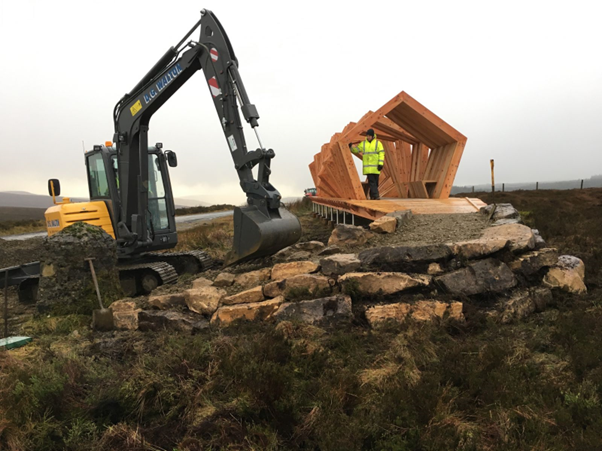
The Nick is one of the series of shelter projects that have been developed through a long-standing partnership between Kielder Art & Architecture and Newcastle University’s School of Architecture, Planning and Landscape.
Sitting on a long deck, The Nick is made up of a series of 23 pentagonal frames, grouped together in sets that partially rotate from one set to the next in a way that completes a full rotation from one end of the building to the other.
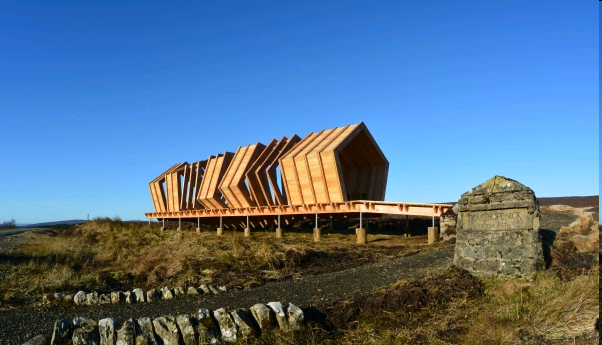
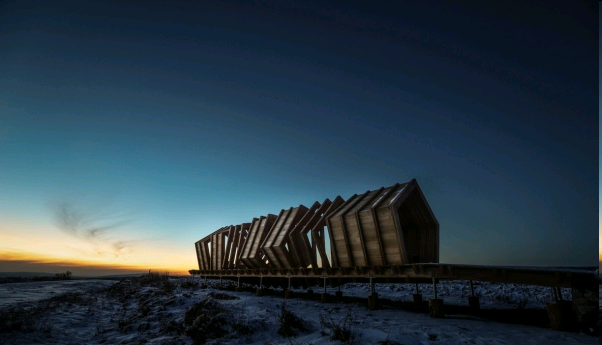
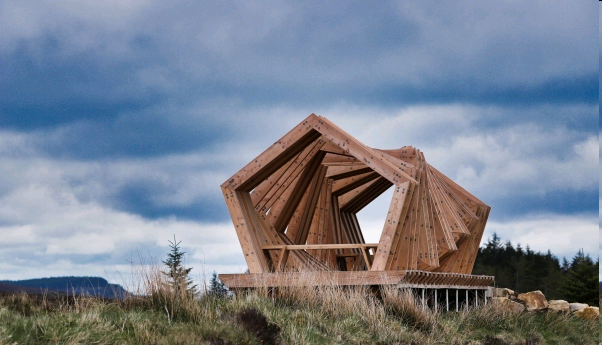
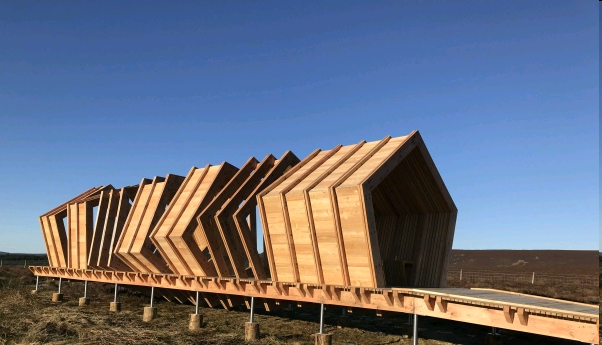
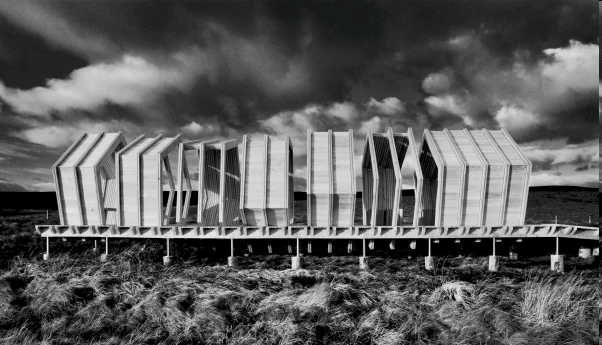
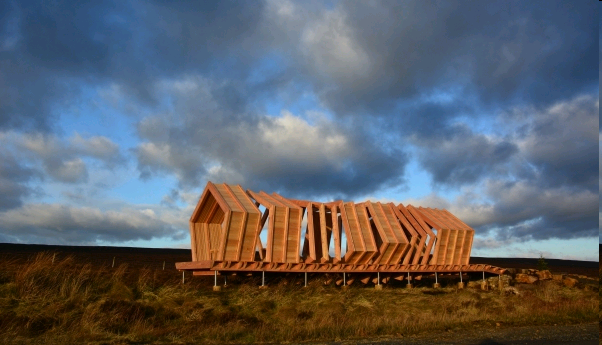
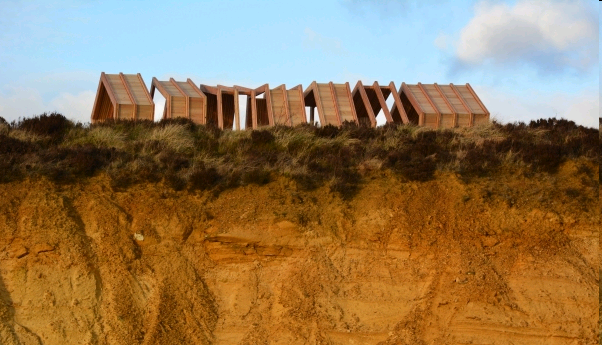
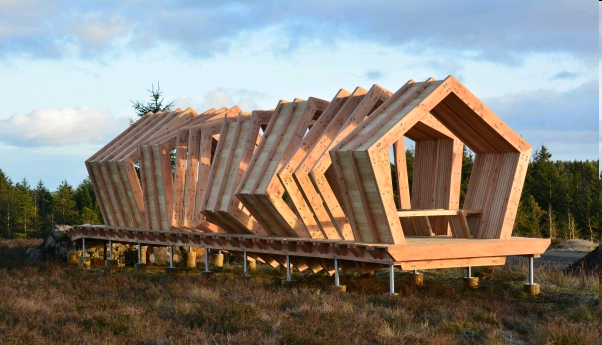
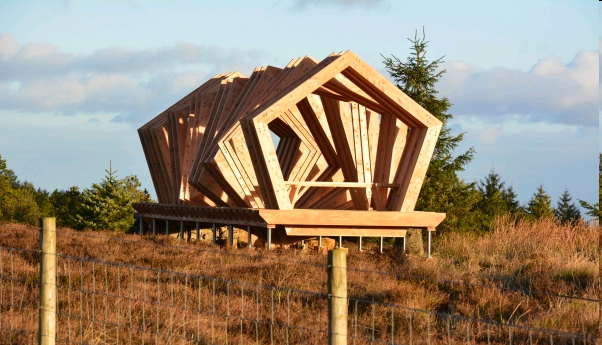
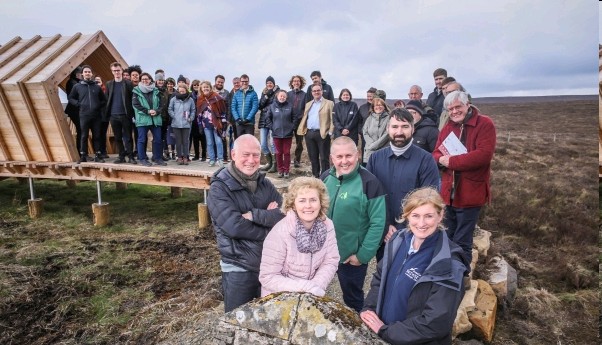
Situated at the highest point of Forest Drive that links Kielder village with the A696 to the east, The Nick is designed to provide a variety of shelter and seating alternatives from which different aspects of the landscape can be viewed. The piece is oriented along an axis connecting the villages of Byrness to the east and Kielder to the west, both about 6 miles distant, reflecting and highlighting the importance of Forest Drive in connecting these valleys and their communities.
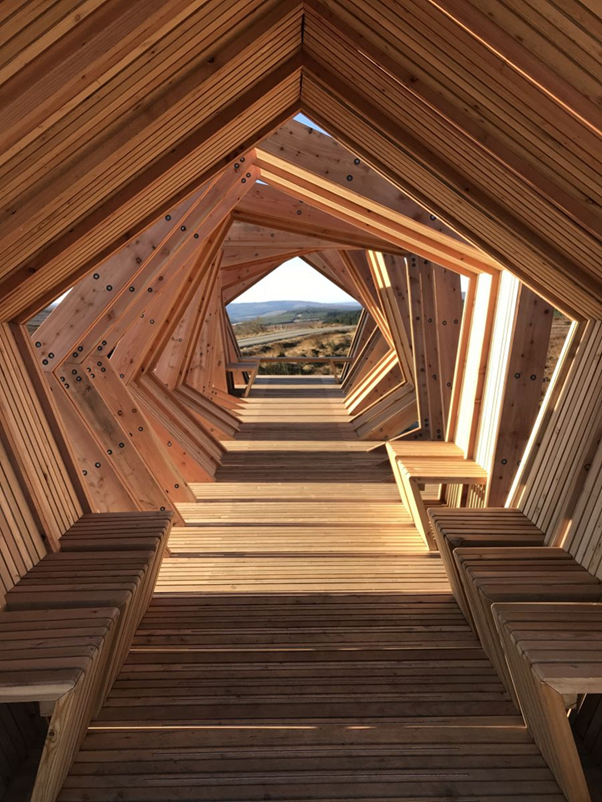
What 3 Words: warmers.grad.slogans
The Nick is situated on the highest point on the Forest Drive, approximately 5.5 miles (9 km) from Kielder Castle.
The Forest Drive is an unsurfaced road running from Kielder village (close to Kielder Castle) in the west, to Blakehopeburnhaugh on the A68 near Byrness in the east. The Forest Drive is 12 miles long and the watershed between the Redesdale and North Tyne valleys is reached 6 miles in from either end of the road.
The Forest Drive is an unsurfaced toll road (Paid at its Kielder end) and is open to the public from the beginning of May through to the end of October each year. Visitors should use it with care, robust 4x4 vehicles are recommended, and should adhere to the 20mph speed limit, keeping an eye out for traffic involved in harvesting operations in that part of the forest.
Please be aware that there is little mobile coverage along the Forest Drive route and due to its elevation. The weather conditions can be very different at The Nick than at either of the road's start points.
A group of seven Masters of Architecture students from the university designed and built The Nick, working throughout 2018 with members of the Redesdale community, the Heritage Lottery funded Revitalising Redesdale delivery team and staff from Forestry England, who collectively evolved a brief for the project, generated ideas, and developed the selected proposal through to a final detailed design.
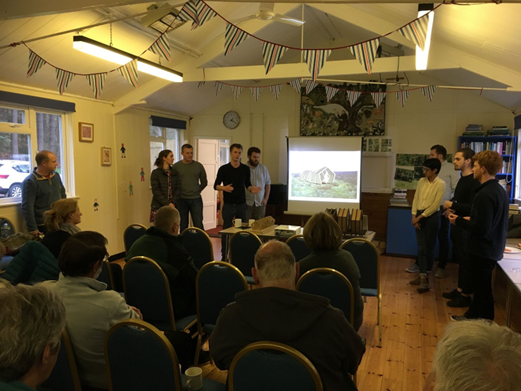
Due to of Blakehope Nick's 1500 foot (460 metres) elevation above sea level, time working on site needed to be minimised where possible, particularly as construction was likely to be taking place through into early winter. With this in mind, much of the structure was prefabricated in the university workshops in Newcastle before being transported to the site.
The building is made of a combination of Scottish and Siberian Larch, chosen for its durability and aesthetics with the structural elements in Scottish and the cladding in the finer grained Siberian. The whole structure is supported on timber piles driven into the soft ground topped with stainless steel legs that raise the deck further off the ground.
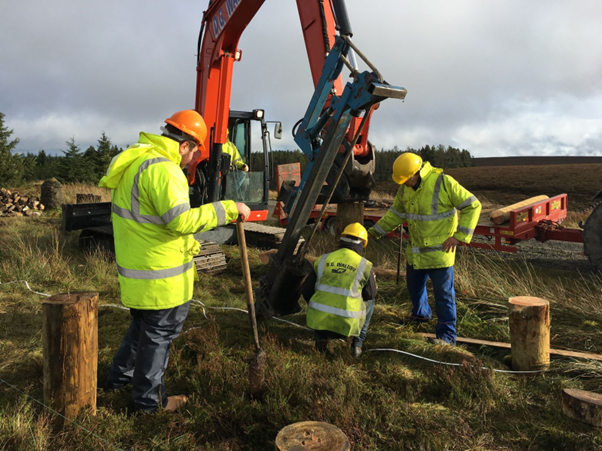
The structure is made up of a series of 23 pentagonal frames, grouped together in sets that partially rotate from one set to the next in a way that completes a full rotation from one end of the building to the other. A deck links all of the frames, elevated in a way that allows the structure to run over the landscape rather than in it, a design feature that also allows visitors to appreciate the geometry of the pentagonal frames as the continue beneath the deck.
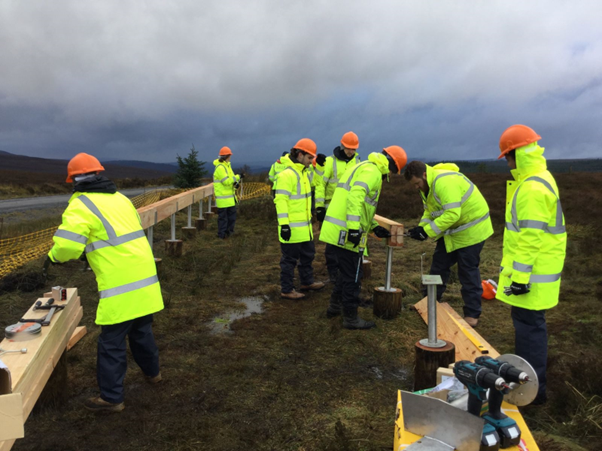
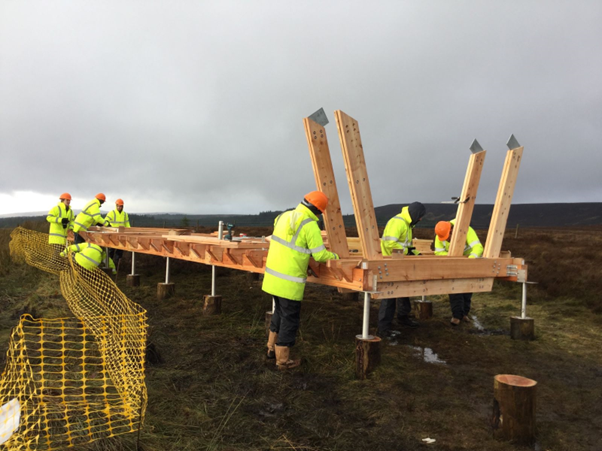
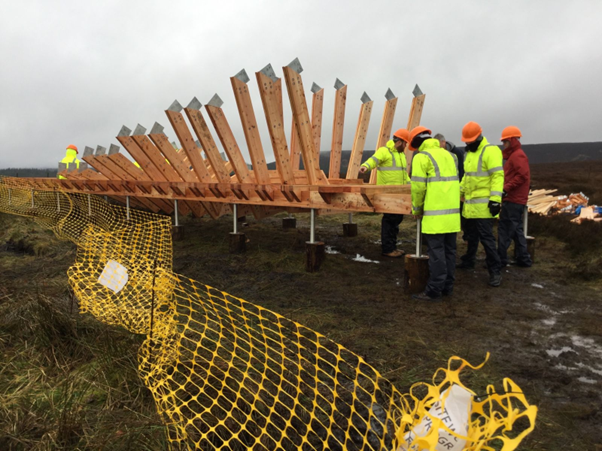
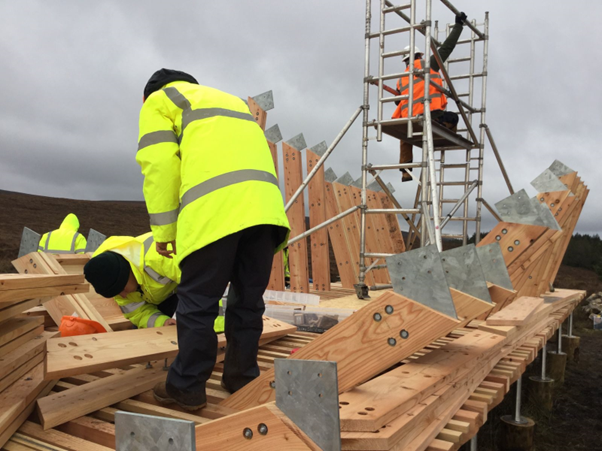
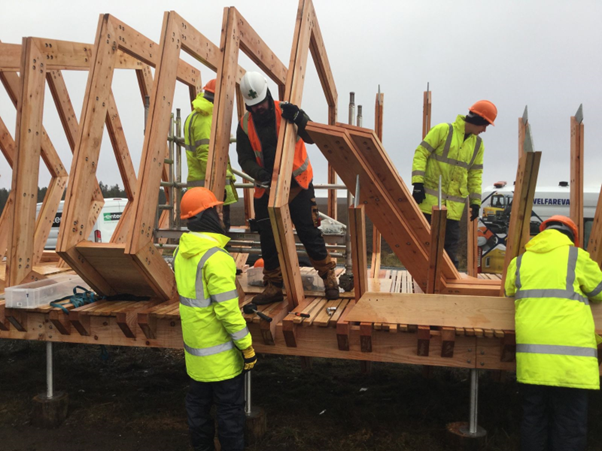
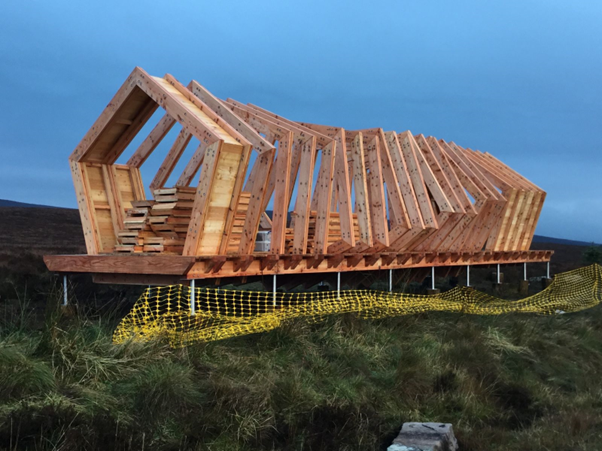
The framed sections are linked by cladding that selectively shields or, where absent, opens the views in different ways along the central deck. In this way distant and closer views are framed, drawing a visitor's eye to a number of salient features of this wild and uncompromising landscape.
Several of the frames also feature integrated seats that allow visitors to rest while taking in a preferred view. A bench-type seat crosses between the final frames, providing a fine view to the west, the sunset and the distant hills surrounding Kielder village.
The final construction process completed in the week leading up to Christmas 2018 involved building the access ramp leading up to the deck.
